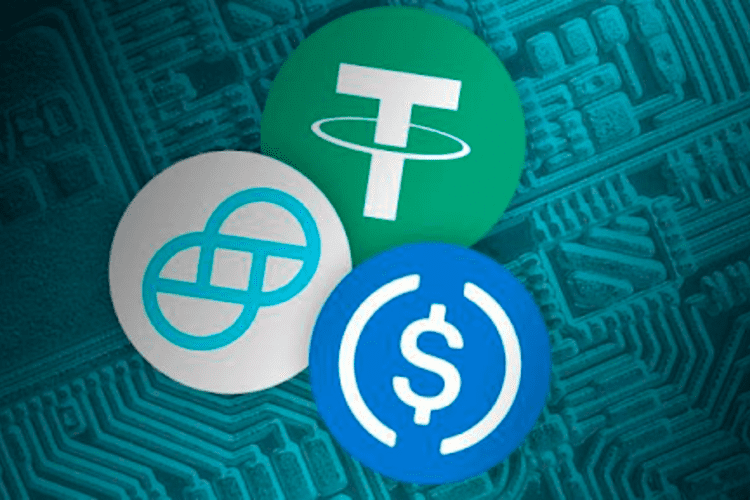What Are Stablecoins: Popularity, Significance, Risks, and Regulations

Until the Terra UST pegging debacle followed by the free fall of LUNA, many investors were unaware of the massive relevance of stablecoins in the crypto market. Then, unfortunately, back-to-back incidents happened, resulting in a perturbation around the trading community. Following UST, the most popular Stablecoin in the market to date, USDT, also lost its peg for a while, stirring the need for a few days. And then, among the peak of a bear market, Tron's popular Stablecoin USDD wobbled to as low as 91 cents and is yet to recover its dollar peg at press time.
These unconnected incidents stormed the crypto market, and many investors lost millions in a short period. Stablecoins are supposed to stay still and keep their price close to the dollar or similar popular monetary unit. But how does the price tank down, and how can a little swing in its price create massive volatility to unstabilize the crypto market? To understand the significance of stablecoins, you need to learn a few critical yet fundamental facts.
What is a stablecoin, and how does it work?
Unlike regular cryptocurrencies, stablecoins are brought into the market by fixing their value to an underlying asset such as the U.S. dollar, Euro, gold, silver, and so on. These blockchain-based crypto assets' primary purpose is to retain their value close to the investment it is fixed to. The technique of maintaining the value static is termed pegging.
A stablecoin issuer often keeps a reserve of an equal amount at any financial institution to maintain its price stability. So on principle, for issuing one million dollars worth of stablecoin, the issuer should deposit a fund worth one million as a reserve and allocate each of its coins at $1. The reserve is kept to ensure the currency's actual value in the dollar. So if the owner decides to sell the coins, the fund also gets withdrawn in equal worth.
Unfortunately, many new stablecoins are based on algorithms instead of following this primary idea. Instead of keeping a reserve in physical assets, algorithm-based stablecoins burn their existing volume to maintain the fixed price.
However, multiple large-volume short selling could easily disrupt the algorithmic-based stablecoins. For example, look at the recent de-pegging incidents of USDD and Terra UST. Both happened because similar events resulted in a shocking nosedive around the market.
The significance of stablecoins
Crypto traders often prefer stablecoins as digital money to buy and sell different cryptocurrencies and avoid steep transaction fees. Some also use them to keep a fund on crypto exchanges to prevent the heavy fluctuation in pricing. Moreover, stablecoins offer a smooth trading experience in crypto exchanges 24x7, just like government-backed currencies do in real-world transactions. Another significant advantage of using stablecoins for crypto trading is they can be used with smart contracts, meaning the contract would execute if certain conditions meet.
Traders often keep millions of dollars in stablecoins on several exchanges through USDT(tether), BUSD (Binance USD), USD Coin (USDC), etc., for trading purposes. Therefore, even though the prices of stablecoins fluctuate seldom, there is an associated risk to keeping money on such assets.
The risk is directly associated with the organizations that offer these currencies on several crypto platforms. Even though the providers of such stablecoins claim to keep a reserve, there is no authentication behind the fund since they are still unregulated.
Stablecoin as an investment medium
Like real-monetary mediums, traders often keep their money and earn it through holding, lending, or staking their stablecoins. Crypto exchanges offer lending services in exchange for a fixed interest of 5% to 12% P.A. on an average. In staking, traders lock their stablecoins for a while to a wallet, node, or platform to help the functioning of a blockchain network. The stablecoins have no access to the trader until the lock-in period gets over. In exchange, they get network voting rights, mining rewards, and interests per instructions. Blockchain networks run on the Proof-of-Stake algorithm and offer stablecoin staking opportunities. Staking provides more return than holding but comes associated with risks, so it better goes with experienced traders. Another strategy of investment associated with stablecoins is borrowing or lending coins in the compound. It proves to be a low-risk strategy but also yields a low return.
Stablecoins and risks associated with it
The UST and USDD price tanking rang the bell of caution for all the stablecoins investors out there. Before putting any money on any stablecoin, traders should check the issuer's reserve report. They should also check if any reserve report is issued and check how much actual reserve they have in a real government-backed currency. Many issuers keep corporate debts, secured loans, or bonds as reserves sensitive to market fluctuations. So traders should refrain from any stablecoin that doesn't have a 100 percent cash reserve.
Like other cryptocurrencies, stablecoins are also associated with security risks stored in exchange or cold wallets.
Stablecoins and the necessity of regulation
Stablecoins are the most popular blockchain-based assets across crypto platforms despite a few letdowns. For example, USDT alias Tether, the largest dollar-pegged stablecoin, has already issued a Euro-pegged coin EURT, Chinese Yuan-pegged CHNT, Mexican peso-pegged MXNT, and soon roll out a Stablecoin pegged to the British pound, GBPT.
But the easy transferability of stablecoins combined with a fixed price could pose risks to the financial stability of an economy; hence it requires a stringent regulation to check the actual reserve and ensure their stability. Moreover, the corresponding risks, such as fraud and security issues, should also come under regulatory observation.
The United States and other state authorities are also planning to roll out their central bank digital currencies (CBDC) to offer a digital version of government-issued money identical to stablecoins to ease digital transactions and encourage a cashless society.